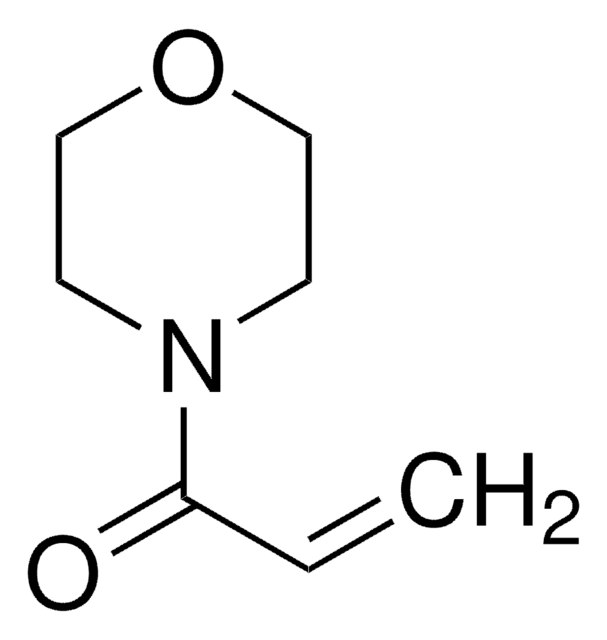V3409
1-Vinyl-2-pyrrolidinone
contains sodium hydroxide as inhibitor, ≥99%
Synonim(y):
1-Vinyl-2-pyrrolidone
About This Item
Polecane produkty
gęstość pary
3.8 (vs air)
Poziom jakości
ciśnienie pary
0.1 mmHg ( 24 °C)
Próba
≥99%
temp. samozapłonu
685 °F
zawiera
sodium hydroxide as inhibitor
100 ppm sodium hydroxide as inhibitor (added to bulk material)
granice wybuchowości
10 %
współczynnik refrakcji
n20/D 1.512 (lit.)
tw
92-95 °C/11 mmHg (lit.)
gęstość
1.04 g/mL at 25 °C (lit.)
temp. przechowywania
2-8°C
ciąg SMILES
C=CN1CCCC1=O
InChI
1S/C6H9NO/c1-2-7-5-3-4-6(7)8/h2H,1,3-5H2
Klucz InChI
WHNWPMSKXPGLAX-UHFFFAOYSA-N
Szukasz podobnych produktów? Odwiedź Przewodnik dotyczący porównywania produktów
Powiązane kategorie
Opis ogólny
Zastosowanie
Hasło ostrzegawcze
Danger
Zwroty wskazujące rodzaj zagrożenia
Zwroty wskazujące środki ostrożności
Klasyfikacja zagrożeń
Acute Tox. 4 Dermal - Acute Tox. 4 Inhalation - Acute Tox. 4 Oral - Carc. 2 - Eye Dam. 1 - STOT RE 2 - STOT SE 3
Organy docelowe
Respiratory system
Kod klasy składowania
10 - Combustible liquids
Klasa zagrożenia wodnego (WGK)
WGK 1
Temperatura zapłonu (°F)
203.0 °F - closed cup
Temperatura zapłonu (°C)
95 °C - closed cup
Środki ochrony indywidualnej
Eyeshields, Faceshields, Gloves, type ABEK (EN14387) respirator filter
Certyfikaty analizy (CoA)
Poszukaj Certyfikaty analizy (CoA), wpisując numer partii/serii produktów. Numery serii i partii można znaleźć na etykiecie produktu po słowach „seria” lub „partia”.
Masz już ten produkt?
Dokumenty związane z niedawno zakupionymi produktami zostały zamieszczone w Bibliotece dokumentów.
Klienci oglądali również te produkty
Produkty
Monomers for ophthalmic use aim for purity, reliability, and comfort, driving innovation for affordable contact lenses.
Nasz zespół naukowców ma doświadczenie we wszystkich obszarach badań, w tym w naukach przyrodniczych, materiałoznawstwie, syntezie chemicznej, chromatografii, analityce i wielu innych dziedzinach.
Skontaktuj się z zespołem ds. pomocy technicznej












